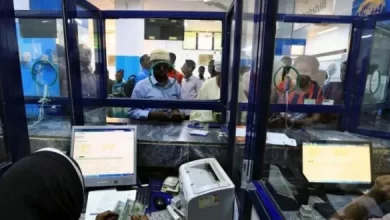IMF expects unprecedented downturn of Sudanese economy

A report issued by the International Monetary Fund (IMF) last week confirmed that Sudan’s Gross domestic product (GDP) has declined in an unprecedented manner, and that (GDP) growth rate was (minus 18.3%) in 2023, expecting the decline to reach (minus 20.3%) by the end of the current year.
The (IMF) experts’ report indicated the possibility of a breakthrough in 2025 if a ceasefire is achieved, so that the expected growth rate would reach (plus 8.3%).
The report analyzed the conditions of the Sudanese economy in light of the ongoing war in 2023 and 2024 in addition to its expectations for 2025, based on three main indicators of economic performance; namely (GDP) growth rates, inflation rates, and unemployment rates.
Inflation Could Reach (200%)
The report prepared for the annual meetings of the World Bank and the International Monetary Fund last week entitled “Global Economic Prospects” discussing inflation rates in Sudan in 2023. The report determined they reached (77.2%), taking into account that the war began after the end of the first quarter of the fiscal year.
However, the report expected inflation rates to reach (200.1%) during the current year, with an increase of (123%) compared to the previous year. The report indicated expectations that inflation rates would decline to (118.9%) in 2025 if the ongoing war in Sudan is terminated.
Finally, the report described unemployment rates in Sudan as “alarming”, as the unemployment rate in 2023 reached (46%), and is expected to reach (58%) at the end of 2024 as well as to record similar levels in 2025, reaching (55.7%) if the war stops, which means that the continuation of the war will lead to a greater increase in the number of unemployed individuals.
The report presents the Fund’s staff analysis and forecasts of global economic developments in major country groups (classified by region, stage of development, etc.) and in many individual countries. It also focuses on key economic policy issues and analyzes economic developments and prospects.
The report is usually prepared in a biannual basis in the context of preparing documentation for the International Monetary and Financial Committee (IMFC) meetings, in addition to serving as the Fund’s main tool for global economic surveillance.





